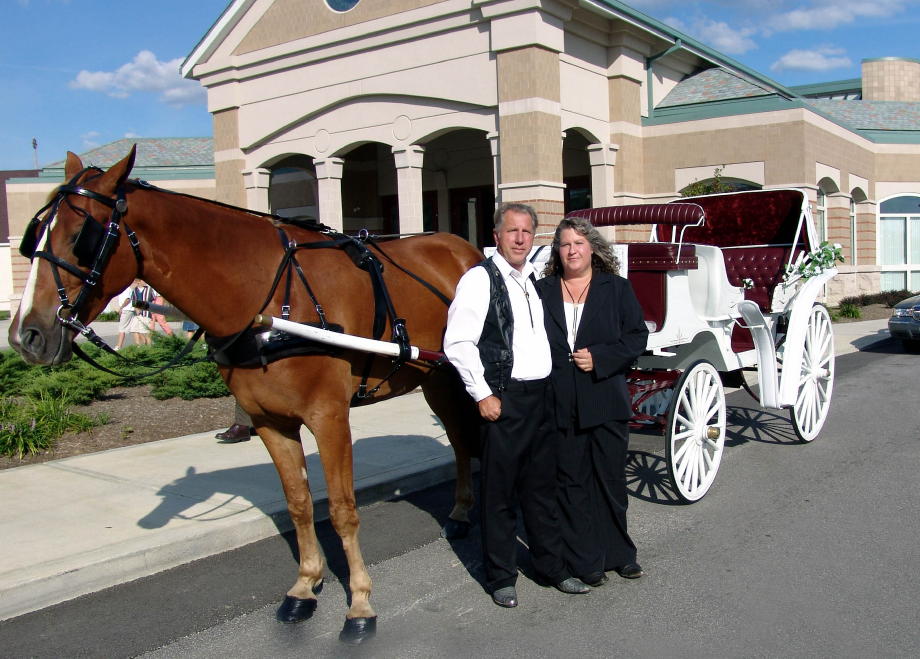
Carriage Occasions LLC Horse-drawn Funeral Pictures
 |
|
| How to keep your balance while sitting on a horse Keeping your balance on a horse is no more difficult than, for example, keeping your balance while walking along a curb - you just have to learn to move with the horse in this case. Our natural balance reflexes will eventually allow us to adjust to the horse's movements, which is comfortable for both horse and rider. Why we often fail to find the right balance when sitting on a horse. There are several reasons why we feel uncomfortable riding at first. Holding with the hands is a mistake. The first and most obvious reason is to grasp something with our hands when we feel like we are losing our balance. But when you are riding a horse, this is highly undesirable, because here your hands are responsible for steering, and the horse has a very sensitive mouth. If you grasp the reins in an attempt to hold on, you will cause the horse pain and discomfort, causing psychological tension. Also, your actively pulling on the reins will simply prevent the horse from moving forward. This is not an effective way to keep balance on a horse because the horse's body is very flexible and unstable and you need to find a connection between your body and the horse's body through the saddle to maintain balance. When you are sitting on a horse - don't lean forward, you can lose your connection to the horse's body and lose your balance. Leaning forward is a mistake. The reaction that keeps you from finding the correct position on the horse is your instinct to lean forward when you feel the horse moving under you. This, happens because when you feel the force of the horse going through the horse's back (front to back), you instinctively oppose that movement and shift your weight forward so you don't feel the deflection backward. Try to relax and keep your balance in your pelvis (forward, following the horse's movement) with your shoulders slightly tilted backward. It is as if you are rushing your center of balance forward, following the momentum of the horse's body. Leaning forward is also a natural human reflex, such as the famous fetal pose to protect ourselves when we are threatened. On horseback, it is also a defensive stance, with the rider's shoulders carried forward relative to the pelvis. But the problem is that by leaning forward we lose our connection with the horse's body, because we shift our weight away from the pelvis, where we can best connect to the horse's movements. Only when we become one with the horse can we be completely safe on the horse, and be in tune with its movements. Tilting forward even slightly from the vertical axis is tilting the rider's pelvis. In this position, the pelvic bones that participate in the movement point backwards against the direction of the horse's energy, which increases stress on the spine, compression of the vertebrae on impact and possible damage to the spine. Balancing in the saddle is due to the proper positioning of the pelvis, keeping it in a balanced position, and the work of the muscles. Another reason why leaning forward doesn't help horse and rider balance is that the horse is already moving about two-thirds of its weight forward (on the front legs) and this is good for the natural balance of the horse without the rider. But when the rider adds his weight, the horse has to compensate, and tilting the rider forward and shifting his center of gravity even more forward only makes things worse. Horses can't do what they can't do Changing a horse's balance from the seat comes from the shoulder, we balance by lifting the pelvis off the saddle and straining the muscles. When the pelvis falls passively on the saddle, it does not help the horse's hind legs work, and instead moves in the opposite direction of the horse's hind legs, not participating in the movement, but instead getting in the way. Properly balancing the rider on the horse is more important for the horse than for the rider. Otherwise, the horse will feel tense and anxious. Raising the center of gravity is a mistake. Sitting on a horse raises the weight up from the saddle, and from the horse's own center of gravity. This is often the result of a tense rider state where we don't feel the balance and control at the top of the horse, and it is an instinctive desire to lift our weight off the horse's back. The shoulders tense up and the pelvis is even less connected to the horse's back. The rider's center of gravity is further separated from the horse's center of gravity. In this case, you will also feel tense. All of these mistakes in proper riding technique are the result of a lack of unity between rider and horse, and a deceptive sense on the part of the rider that he has to hold onto the saddle forcefully in order to control the situation and maintain some equilibrium. This approach is not productive, even to the contrary, because it blocks the horse's energy of movement and makes the horse tense. This is what prevents the rider and horse from connecting correctly in the end. |
Last Update 07-15-2010